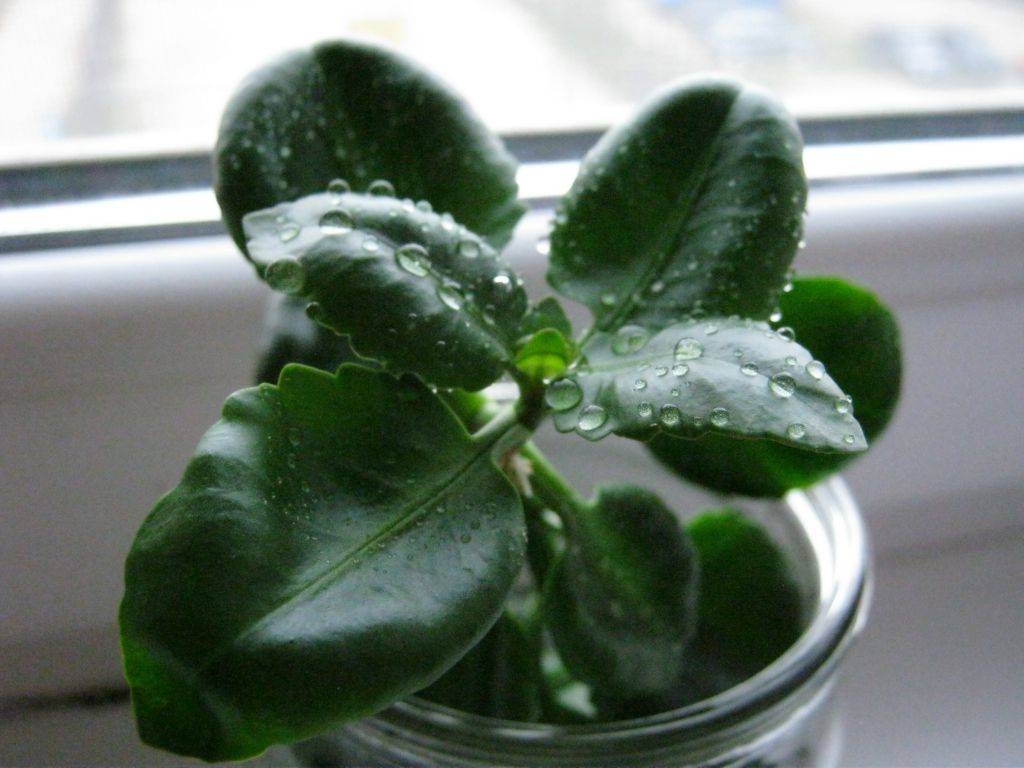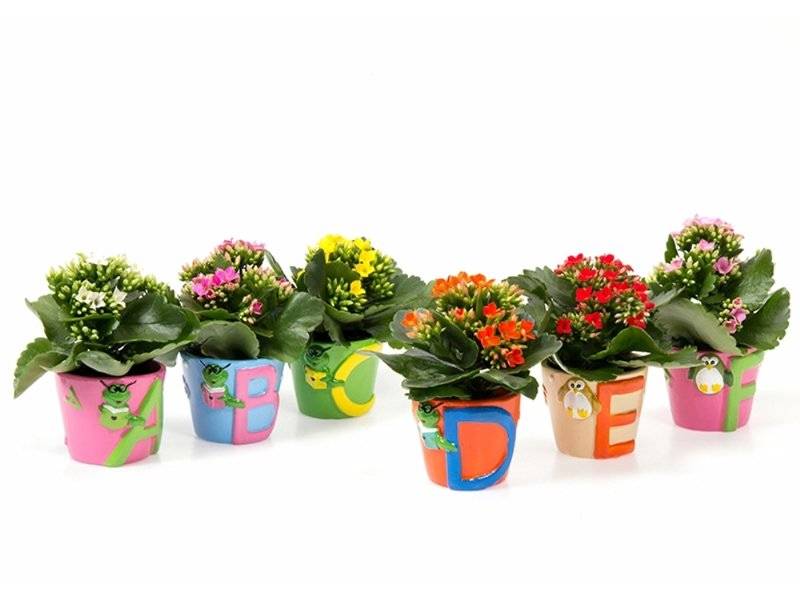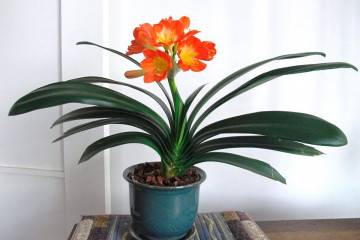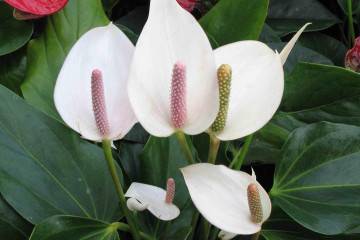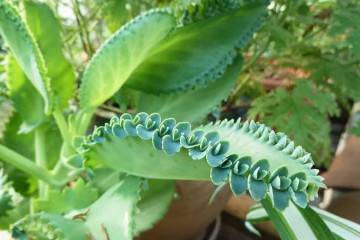Why Kalanchoe does not bloom at home
Content:
Kalanchoe is a popular homemade succulent flower native to Madagascar. Like other succulents, this flower is unpretentious, but flowers appear on it only if properly cared for. The reasons why the Kalanchoe does not bloom may be different. The article discusses the main most common care mistakes that lead to the absence of flower buds on a succulent.
Features of flowering Kalanchoe at home
In total, in the wild, there are more than two hundred species of this tropical plant, in domestic ones - about twenty species. The most common are Bryophyllum, Brossfeld, Kalandiva, Mangin, Daygremont, and pinnate.
Tropical plants are accustomed to harsh living conditions, so they are able to delight their owner without particularly careful care. The structure of the fleshy leaves of the succulent allows the flower to accumulate moisture. Therefore, the flower can survive even without water. However, the appearance of flowers is highly dependent on the conditions of detention.
The healing properties of the Kalanchoe plant were discovered and studied by Soviet scientists. Kalanchoe tinctures help to heal wounds, reduce inflammation and stop bleeding.
How many times a year it blooms, periods of activity and rest
Flowers on the succulent appear in the winter season. The start time of flowering can vary depending on the type of plant, but most often the first buds appear in winter. In the first days of spring, Kalanchoe inflorescences fall off. Longer flowering can be achieved with special care.
Some Kalanchoe varieties are late flowering. They will delight their owners with a cloud of small flowers only in early spring and last until September-October.
After the end of the period of activity, the Kalanchoe enters a resting phase. The plant must be given the opportunity to recuperate every year. Without observing this rule, the Kalanchoe does not bloom. To provide the plant with a full rest, the wilted buds are pinched off, and the flower itself is placed in conditions of reduced daylight hours. Watering is limited as much as possible, and top dressing is completely excluded.
Kalanchoe stretches up and only lowers the leaves
When buying, Kalanchoe looks like a beautiful bush with wavy leaves, densely showered with buds. But after a while, flowering stops, the plant begins to stretch upward, the green cover becomes shallow and gradually falls off.
Why Kalanchoe stretches and does not bloom? There are only two reasons for the unpresentable appearance. The first is the absence of the sleep period mentioned above. After the end of flowering, the Kalanchoe needs at least a month of respite, otherwise it simply will not have time to form new buds.
The second reason is the lack of light. Like other succulents, Kalanchoe needs at least 10 hours of light. From a lack of lighting, the stems and leaves begin to deform, become thin and fragile. As a result, foliage grows only at the top of the plant, which leads to damage to the weakened trunk.
Kalanchoe, suffering from a lack of sunlight, can be saved by installing additional lighting and trimming all elongated shoots. After pruning, he needs to provide a period of complete rest. It will take about a month to restore the dense crown of the plant.
Why a flower may not bloom, reasons
Improper plant care is the main reason for the lack of repeated flowering of Kalanchoe. When buying, sellers often argue that the flower is undemanding - just water it from time to time. But despite the fact that this flower is considered unpretentious, it needs special care for flowering.
Reasons for the lack of flowering:
- Some Kalanchoe are annual hybrids. It is important to clarify this point when buying a plant.
- Improper lighting. The plant will be able to form buds only under the condition of a short daylight hours - no more than 10 hours. With a lack of light, the succulent can stretch out and weaken.
- Wrong soil chosen. The soil in the pot should be of neutral acidity, friable, and good air permeability. In soil with an unsuitable composition, Kalanchoe does not grow and does not bloom.
- Over or under watering. Succulents prefer dry, slightly moist soil.
- Failure to comply with the temperature regime.
- Lack of rest period. After each flowering, the plant needs three to four weeks of rest. Otherwise, the kidneys simply do not have time to form.
- Too frequent or infrequent feeding. Over-feeding increases the rate of foliage growth, but slows down bud formation.
- No clipping. In the period from spring to late summer, it is necessary to pluck the shoots from time to time. Otherwise, the bush may lose its original shape.
- Untimely transplant. You can change the place of residence of a succulent only after the end of flowering, in late summer or early autumn.
- Diseases or pests. You can identify parasites on a plant with the naked eye. Kalanchoe often independently heals from most diseases, but in some cases - for example, aphid infestation, it cannot do without help.
The main mistakes in flower care
Lack of information about proper care often leads to the fact that the Kalanchoe does not bloom. If the succulent does not form flower stalks, looks weak and unhealthy, you need to carefully check the conditions for its maintenance.
Incorrect lighting
Kalanchoe requires a different amount of light depending on the period of the plant's life. During the period of activity, the pot with the plant can be placed on the east or west windowsill. Window sills on the south side will not work, since direct sunlight can not only burn the flower, but also slow down its growth. On days of increased solar activity, it is better to shade the window.
It is possible to determine whether there is enough lighting for the Kalanchoe by the leaves of the plant. With enough light, they have a reddish outline. Pale and elongated leaves signal a lack of sun.
Unsuitable soil composition
A Kalanchoe purchased in a store has a very small pot, and the soil consists of a peat substrate. This soil is not suitable for further cultivation, so the plant must be transplanted.
To transplant, you will need a larger pot (about a few centimeters) with drain holes, drainage and neutral acid soil for succulents. You can buy it in the body or make it yourself. To do this, it is necessary to mix leafy soil (50%), peat (25%) and sand (25%).
Step-by-step process of transplanting Kalanchoe:
- Put a thin layer of drainage in a pot (no more than 1/6 of the pot height).
- Disinfect new soil with boiling water.
- Carefully remove the Kalanchoe, shake off the roots (no need to rinse) and place in a new pot.
- Water in moderation and store in a dark place for several days.
Improper watering
Succulents do not need abundant watering. Watering the plant is necessary only after the soil has completely dried. Excessive watering of the succulent leads to metabolic disorders, rotting of the root system and the formation of mold and fungi, and insufficient watering leads to loss of foliage. Kalanchoe, which suffered from severe drought, will recover for a very long time.
The main difficulty lies in the fact that outwardly it is very difficult to determine the overflow of a plant. Usually, all symptoms appear after a very long time, since all negative processes occur in the root system. A plant that has suffered from excess moisture can still be saved. For this, the plant is dried and transplanted into new soil. In this case, it is important to remove all rotten parts of the roots, and treat the cut sites with a disinfectant.
Signs of Kalanchoe overflow:
- the appearance of yellow spots;
- lethargic and pale leaves;
- non-drying soil.
The amount of water required for irrigation depends on the life stage of the plant and temperature conditions. During the rest period, Kalanchoe is almost not watered, the rest of the time - about 1-2 times a week.
Unsuitable room temperature
The optimum temperature in the house for Kalanchoe during the flowering period is from 18 to 29 degrees. Since this plant is native to the subtropics, it is not afraid of heat and dry air. It is important to protect the plant from drafts - do not place it near open vents and operating air conditioners.
Higher temperatures are acceptable for Kalanchoe, but cold below 10 degrees or frost can cause serious damage to the plant. A flower affected by the cold can be saved by cutting off the entire upper part of the plant.
Excessive feeding
Another common mistake is overfeeding. Excessive use of fertilizers leads to an increased growth of green mass and a lack of inflorescences. It is recommended to feed a succulent plant no more than once every three weeks, during flowering - every two weeks. In winter and a dormant period, top dressing is completely excluded.
As a fertilizer, liquid products are used specifically for succulents. They must contain such substances as nitrogen, phosphorus and potassium. Fertilizer is used only by the root method. To avoid root burns, the fertilizer is diluted in a large amount of water (much more than written in the instructions).
There are several ways to make fertilizer for Kalanchoe yourself:
- Dissolve a teaspoon of granulated sugar in a liter of water.
- Dissolve a succinic acid tablet (sold in a pharmacy) in a liter of water.
- Make an infusion from egg shells - pour boiling water over a handful of dried shells and stand for five days.
Lack of feeding is also harmful to the plant, as well as its excess. When caring for a flower, it is important to stick to the middle. You can determine whether a succulent needs additional nutrients by its appearance. The main signs are deformed, darkened or yellowed leaves and stems, lack of flowering and death of the lower leaves.
How to make Kalanchoe bloom at home
It happens that even with proper care, the plant stops producing buds. Many gardeners are interested in what to do to make the Kalanchoe bloom.There are a few tricks you can use to help your tree bloom and extend the flowering time. Such manipulations are carried out after the plant has completely faded.
For plants, the flowering stage means ready to reproduce. In nature, Kalanchoe feel the need to breed only after a tropical winter with short daylight hours, little rainfall and low temperatures. Such extreme conditions stimulate active long flowering.
What needs to be done for this
To make the Kalanchoe bloom, the following manipulations are carried out:
- The plant is artificially immersed in a dormant state for several months. In order for the Kalanchoe to stop its growth and go to sleep, its branches are cut off almost at the level of the soil. The pot is covered with a thick cloth or placed in a dark room. The temperature should not be about 15 degrees Celsius. Watering is done two to three times a month, feeding is excluded.
- Now the flower needs to form a strong crown. This process will last from summer to November. The pot with Kalanchoe is returned to its original place. You can water the flower after the soil has completely dried, once every 10-15 days. The ideal air temperature during this period is from 16 to 25 degrees Celsius. To make the plant thick, pinch off the extra leaves.
- Stimulates the growth of the kidneys. In order for the buds to appear on the Kalanchoe, it needs eight hours of daylight hours, moderate watering and a temperature of about 18 degrees Celsius. The first buds should appear after a month.
Another way to stimulate flower bud formation is through stress therapy. Kalanchoe is wrapped in dense fabric and put away in a dark place. At this time, you need to stop watering and feeding the flower. A month later, the plant is placed in the same conditions.
It is not difficult to find the reason for the absence of flowers on the Kalanchoe. The main thing is to carefully observe the plant - any changes in its appearance signal problems. When caring for this type of succulent, you need to remember that excess care does more harm than good. With just a little effort, you can make your plant appear vibrantly colored.




